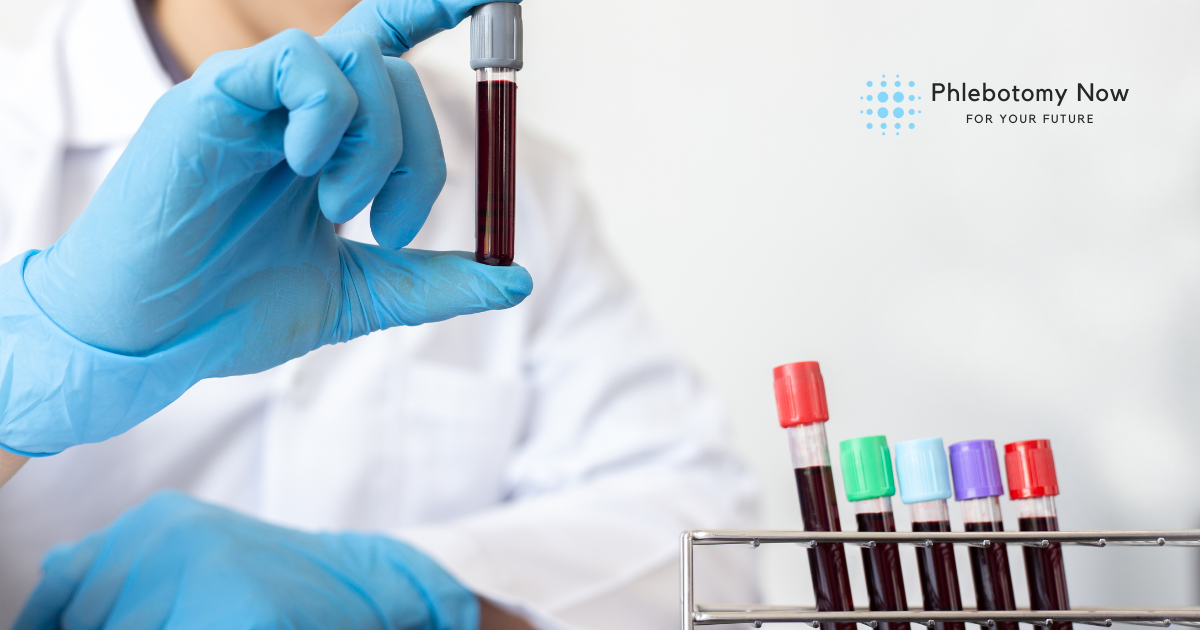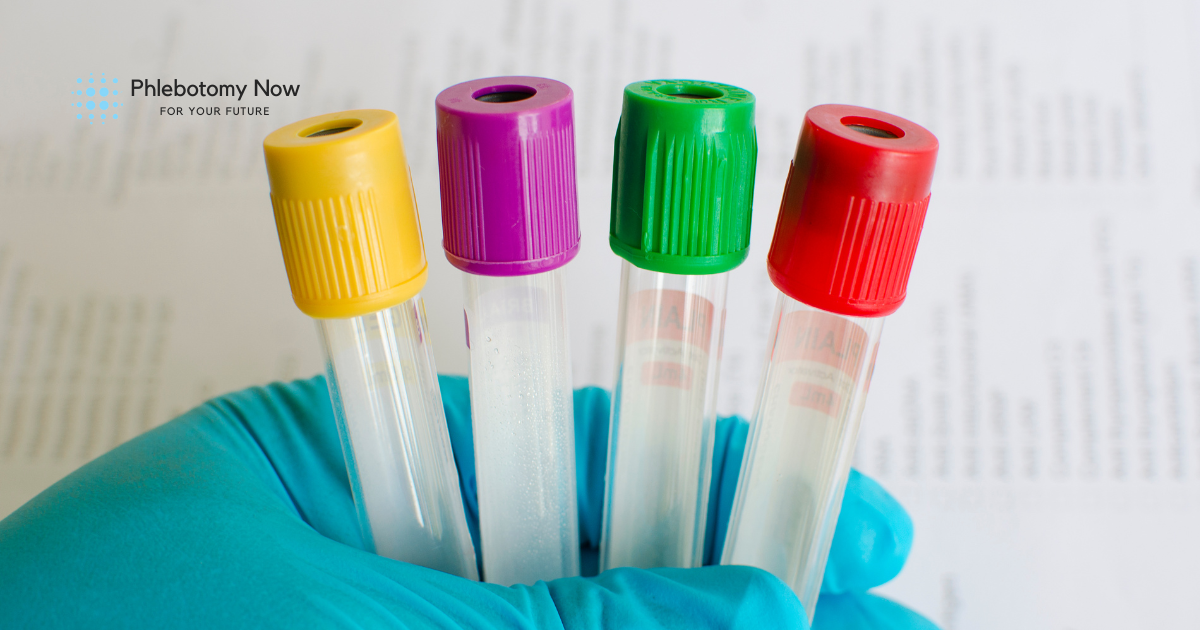Have you ever wondered why blood collection tubes come in so many vibrant colors? It’s not just a visual aesthetic – each color denotes a specific type of tube with unique properties crucial for accurate blood testing. Understanding these phlebotomy tube colors is an essential skill for phlebotomists, both seasoned and new, to ensure they collect the right samples for the right tests.
| Key takeaways | ||||||||||||||||||||||
| Phlebotomy tubes are color-coded to indicate their purpose and contents. Understanding these codes is crucial for accurate blood collection. | ||||||||||||||||||||||
| Each tube color has specific additives that either promote clotting (red top) or prevent clotting (lavender, green). | ||||||||||||||||||||||
| The type of tube used depends on the specific test being performed. | ||||||||||||||||||||||
|
Here’s a breakdown of the most common phlebotomy tube colors and their uses:
|
||||||||||||||||||||||
| It’s important to follow laboratory protocols and not interchange tubes for different tests. | ||||||||||||||||||||||
| Phlebotomists should use proper technique and adhere to aseptic procedures to avoid contamination. | ||||||||||||||||||||||
| Continuous education is crucial for staying up-to-date on phlebotomy practices. | ||||||||||||||||||||||
| Understanding tube colors is just one aspect of phlebotomy. Mastering phlebotomy principles and techniques is essential for success. |
Unlocking the Secrets of Phlebotomy Tube Colors: Your Definitive Guide
In the dynamic realm of phlebotomy, precision reigns supreme. Achieving accurate results hinges on the adept utilization of blood collection tubes, each bearing a distinct color code indicative of its specialized function and unique chemical composition. For novice phlebotomists and seasoned professionals alike, comprehending these chromatic distinctions is paramount in securing precise blood samples for an array of diagnostic evaluations. Dive into the chromatic spectrum of phlebotomy tubes to unravel their mysteries and enhance your proficiency in the field.
Deciphering the Color Code: A Rainbow of Significance
Gray Top Tube:
- Color: Gray stopper
- Additives: Potassium oxalate, sodium fluoride, or Na2 EDTA
- Purpose: Tailored for tests necessitating glycolytic inhibition to preserve glucose integrity, pivotal for accurate glucose level assessments.
- Common Tests: Blood alcohol levels, glucose levels, lactate levels, bicarbonate levels, electrolyte panels, and therapeutic drug monitoring.
Lavender/Purple Top Tube:
- Color: Lavender or purple stopper
- Additive: Ethylenediaminetetraacetic acid (EDTA)
- Purpose: Prevents blood clotting, ideal for comprehensive analysis of cellular components in whole blood assessments.
- Tests: Complete blood count (CBC) with differential, white blood cell count, red blood cell count, platelet count, hemoglobin levels, and erythrocyte sedimentation rate (ESR).
Green Top Tube:
- Color: Green stopper
- Additives: Ammonium heparin, lithium heparin, or sodium heparin
- Purpose: Anticoagulants facilitating plasma or whole blood analysis by impeding clot formation.
- Tests: Stat chemistry panels, blood gas analysis, electrolyte panels, and select hormone testing.
Red Top Tube:
- Color: Red stopper
- Additives: Clot activator (in plastic tubes only)
- Purpose: Designed for serum collection by promoting blood clotting for the isolation of serum from cellular components.
- Tests: Serological tests, blood typing and compatibility testing, and certain hormone testing.
Light Blue Top Tube:
- Color: Light blue stopper
- Additives: Sodium citrate (3.2% or 3.8%) or CTAD
- Purpose: Citrate-mediated inhibition of clot formation for coagulation testing.
- Tests: Prothrombin time (PT), fibrinogen levels, D-dimer, and thrombin time (TT).
Yellow Top Tube:
- Color: Yellow stopper
- Additives: Citric acid, dextrose, and trisodium citrate
- Purpose: Primarily employed for viral cultures and DNA testing, including paternity tests and HIV viral load assessments.
Tan Top Tube:
- Color: Tan stopper
- Additive: K2 EDTA
- Purpose: Exclusive use for blood lead level testing.
Pink Top Tube:
- Color: Pink stopper
- Additives: Variable based on test requirements
- Purpose: Occasionally utilized for tests such as HIV viral load, blood typing, and compatibility testing, adhering to laboratory-specific protocols.
Royal Blue Top Tube:
- Color: Royal blue stopper
- Additives: None (additive-free)
- Purpose: Ideal for tests necessitating minimal interference from anticoagulants or clot activators, safeguarding test accuracy.
- Tests: Toxicology screens, therapeutic drug monitoring, and trace element testing.
Pearl Top Tube:
- Color: Pearl (white) stopper
- Additives: Separating gel and EDTA
- Purpose: Tailored for viral PCR testing, including HHV-6, adenovirus, and toxoplasmosis analysis.
Gold Top Tube:
- Color: Gold stopper
- Additives: Serum separator gel (SST) and clot activator
- Purpose: Facilitates a broad spectrum of serum analysis, encompassing hepatitis testing, HIV testing, serology, and endocrinology evaluations.

Phlebotomy Now – Phlebotomy Tube Colors
Frequently Asked Questions (FAQs):
Why are phlebotomy tubes color-coded?
Phlebotomy tube colors signify specific additives and functions, streamlining the blood collection process and ensuring accurate test results.
Can I interchange tubes for different tests?
While some tubes may serve similar purposes, it’s imperative to adhere to laboratory protocols to maintain test integrity and accuracy.
Are there any precautions to consider during blood collection?
Adhere to precise techniques, needle selection, and aseptic procedures to preserve sample integrity and mitigate potential contamination risks.
How do I stay updated on phlebotomy practices and advancements?
Stay abreast of industry developments through continuous education, training programs, and professional organizations like the American Society for Clinical Pathology (ASCP) and the National Phlebotomy Association (NPA).
What should I do if I have specific questions about phlebotomy procedures?
Consult qualified healthcare professionals or refer to reputable sources for personalized guidance and advice tailored to your specific queries and concerns.
Elevating Expertise: Beyond Color Recognition
While mastering phlebotomy tube colors is pivotal, cultivating a profound understanding of phlebotomy principles and techniques is paramount for excellence in the field. Leverage your knowledge to refine your skills, uphold meticulous standards, and embrace continuous learning to propel your career to new heights.
Conclusion:
Armed with a comprehensive comprehension of phlebotomy tube colors and their functionalities, phlebotomists are empowered to navigate the intricacies of blood collection with precision and confidence. By amalgamating this knowledge with rigorous training, impeccable technique, and a commitment to ongoing education, phlebotomists can deliver unparalleled patient care and contribute to the advancement of healthcare outcomes.
Disclaimer: The material presented below is for educational purposes only and should not be used as a substitute for professional medical advice.
Phlebotomy Now: Pioneering Your Path to Success
Embark on a transformative journey in the realm of phlebotomy with Phlebotomy Now, your premier destination for comprehensive training and career advancement.
Our immersive curriculum, seasoned instructors, and unwavering commitment to student success equip you with the requisite skills and expertise to excel in this fulfilling field. Embrace unparalleled opportunities for growth, mastery, and professional fulfillment with Phlebotomy Now by your side.
Reach out to Phlebotomy Now today and embark on the path to a gratifying phlebotomy career. Your future begins here.







